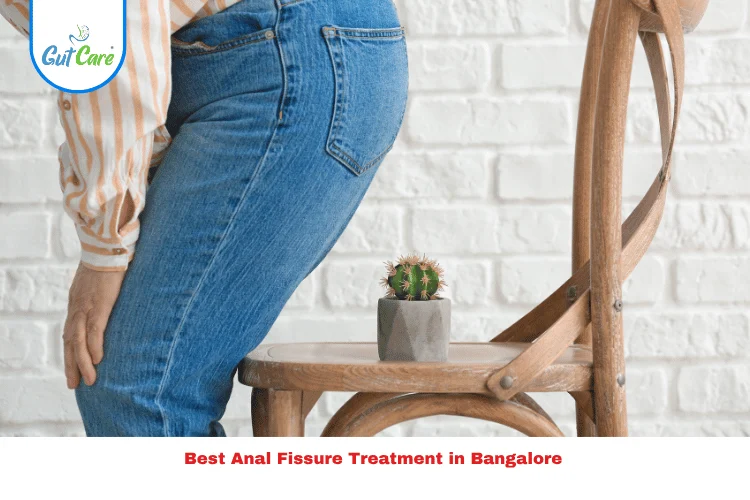Dealing with an anal fissure can be painful, uncomfortable, and frustrating. Anal fissure is a small tear in the anus lining, which can cause a lot of discomfort, pain during bowel movements, bleeding, and burning afterward. A well-designed anal fissure diet can help you manage your symptoms and enhance healing.
I have created this definitive list of foods to avoid with anal fissure, along with dietary tips and when to see an anal fissure specialist. If you are looking for an effective diet for fissure, this guide will help you understand what to avoid and when to take specific actions to aid recovery.
Why Diet Matters in Anal Fissure Management
To heal an anal fissure, you must keep your stool soft, you must avoid constipation and irritation, and there are certain foods to avoid with anal fissure by causing hard stool, inflammation or diarrhea. Following an appropriate fissure diet chart will reduce straining during bowel movements and help heal quicker.
Let’s break down the foods to avoid with anal fissure and explain why each one may be harmful during this time.
1. Low-Fiber and Refined Foods
Why Avoid:
White rice, white bread, pasta, and baked goods made from all-purpose flour are refined foods, and have no dietary fiber. These foods lead to constipation and hard stools — a serious foe of anal fissure healing.
Common Examples:
- White rice
- White bread
- Pasta (non-whole grain)
- Pastries and cookies
- Processed cereals
Precaution:
If you’re used to a low-fiber diet, gradually increase your fiber intake to avoid gas or bloating. Replace these with whole grains like brown rice, oats, and whole wheat products.
2. Spicy and Fried Foods
Why Avoid:
Spicy foods can irritate the already sensitive anal lining, worsening pain and inflammation. Fried foods are harder to digest and can contribute to gastrointestinal discomfort or loose stools.
Common Examples:
- Hot curries
- Pickles with chili
- Fried snacks like samosas, pakoras, and chips
Precaution:
If you enjoy spices, try using mild herbs like coriander, turmeric, and cumin instead. Always cook with minimal oil.
3. Dairy Products (in Excess)
Why Avoid:
While some people tolerate dairy well, for others, products like cheese and full-fat milk can lead to constipation. Additionally, if you’re lactose intolerant, dairy can cause bloating and diarrhea, irritating your fissure further.
Common Examples:
- Cheese
- Paneer
- Whole milk
- Ice cream
Precaution:
If dairy aggravates your symptoms, consider switching to plant-based alternatives like almond or oat milk. Yogurt with live cultures may help gut health but should be used in moderation.
4. Red Meat and Processed Meats
Why Avoid:
Red meat is low in fiber and takes longer to digest, which can slow down bowel movements and lead to constipation. Processed meats often contain preservatives and high salt levels, which are not ideal for healing.
Common Examples:
- Beef
- Mutton
- Sausages
- Bacon
Precaution:
Choose lean proteins like lentils, tofu, or grilled fish. If you consume meat, pair it with high-fiber vegetables.
5. Caffeinated Beverages
Why Avoid:
Coffee, tea, and cola may act as diuretics, leading to dehydration and harder stools. Caffeine can also overstimulate the digestive tract in some individuals.
Common Examples:
- Coffee
- Black tea
- Energy drinks
- Colas
Precaution:
Stay hydrated with water, herbal teas (like chamomile), or warm water with lemon. Limit caffeinated drinks to one per day, if tolerated.
6. Alcohol
Why Avoid:
Alcohol can dehydrate your body, resulting in dry, hard stools. It may also interfere with the gut’s normal rhythm, leading to irregular bowel movements.
Common Examples:
- Beer
- Wine
- Spirits
Precaution:
If you’re healing from a fissure, it’s best to completely avoid alcohol. If consumed, increase your water intake to counteract the dehydrating effects.
7. Carbonated and Sugary Drinks
Why Avoid:
Fizzy drinks can cause bloating and gas, increasing discomfort. High-sugar drinks can disrupt gut bacteria and promote inflammation.
Common Examples:
- Soda
- Sweetened fruit juices
- Flavored milk drinks
Precaution:
Opt for freshly squeezed juice (without added sugar), coconut water, or plain water with cucumber slices for flavor.
8. Bananas (Unripe or in Excess)
Why Avoid:
While ripe bananas can help with digestion, unripe or overly consumed bananas may cause constipation in some individuals.
Precaution:
Monitor how your body reacts. If bananas worsen your condition, consider switching to papaya or soaked prunes as fiber-rich alternatives.
Building a Healing Diet for Fissure
Now that you know the foods to avoid with anal fissure, let’s talk briefly about what to include in your fissure-friendly diet:
- High-fiber fruits: Papaya, apple (with skin), pears
- Vegetables: Carrots, spinach, pumpkin, bottle gourd
- Whole grains: Brown rice, oats, millet, whole wheat
- Hydration: Aim for 8–10 glasses of water daily
- Healthy fats: Ghee (in small amounts), olive oil, flaxseed oil
This forms the basis of an ideal fissure diet chart. A good mix of these foods supports healing and ensures soft, regular bowel movements.
When to Consult an Anal Fissure Specialist
While dietary changes can significantly ease symptoms, persistent or chronic fissures need medical attention. Signs that you should consult an anal fissure specialist include:
- Pain lasting more than 6 weeks
- Recurring fissures
- Bleeding with every bowel movement
- Pain that interferes with daily life
An expert can assess whether medications, ointments, or surgical options are required.
Final Thoughts: Healing Through Diet and Awareness
Managing an anal fissure doesn’t have to feel overwhelming. By eliminating the fissure food to avoid and following a balanced diet for fissure, you can reduce symptoms and promote faster recovery.
To summarize:
- Avoid low-fiber, spicy, fried, dairy-heavy, and dehydrating foods.
- Hydrate well and consume fiber-rich meals.
- Monitor your symptoms and consult a specialist if needed.
Your healing begins with what’s on your plate. If you’re struggling to create a personalized anal fissure diet, reach out to a qualified dietitian or anal fissure specialist in Bangalore or your local area.
Stay mindful, eat well, and give your body the care it deserves.
Visit Gut care clinics for expert care!
FAQs
1. What are the top foods to avoid with anal fissure?
The top foods to avoid with anal fissure include spicy foods, red meat, processed foods, low-fiber items like white bread and rice, and caffeinated beverages. These can worsen symptoms and delay healing.
2. What is the best anal fissure diet to follow?
The best anal fissure diet is rich in fiber, water, and natural laxatives like fruits and vegetables. It should focus on softening stools and reducing strain during bowel movements to support healing.
3. Can a proper diet for fissure prevent surgery?
Yes, following a proper diet for fissure, including avoiding irritating foods and staying hydrated, can often help avoid the need for surgery—especially in early stages. Consult an anal fissure specialist for a tailored plan.
4. Is there a fissure diet chart I can follow daily?
Yes, a fissure diet chart typically includes fiber-rich grains, fruits like papaya and apple, steamed vegetables, and adequate water intake. It also highlights fissure food to avoid like dairy, fried snacks, and spicy meals.
5. What food to avoid in fissure if I experience constipation?
If constipation is an issue, the food to avoid in fissure includes red meat, cheese, white bread, and alcohol. These can harden stools and worsen fissures. Focus on foods that aid digestion and promote regularity.




